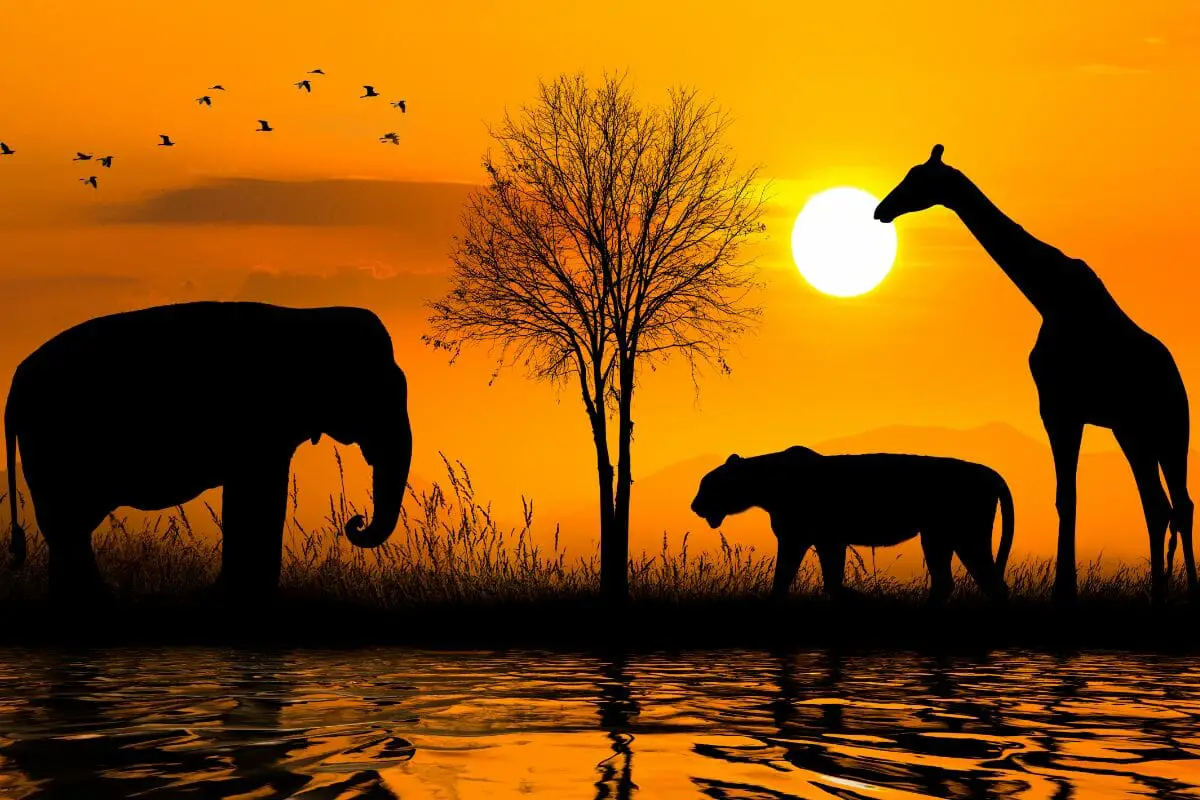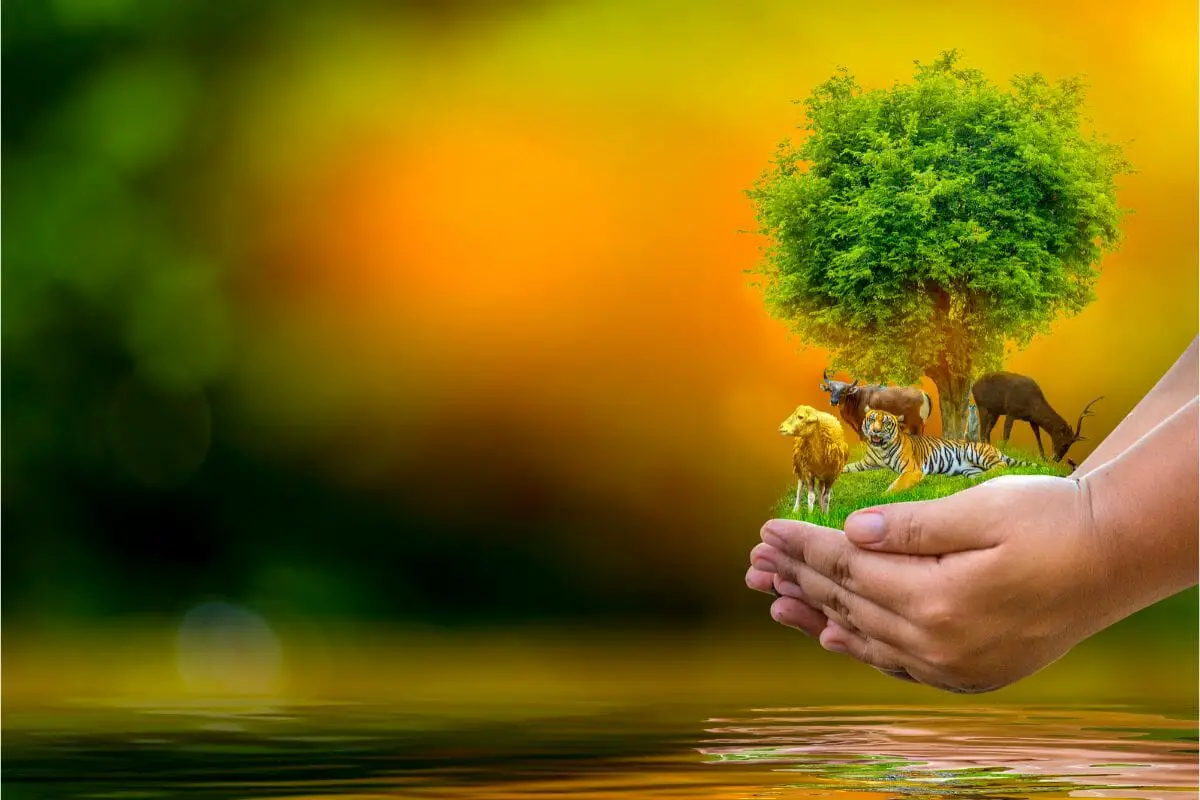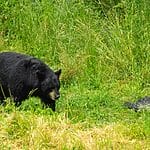There are numerous ways that wildlife conservation can be funded.
Through the help of the government, organizations, charities, and the public, we can all help conservation efforts. In this article, we hope to establish the main sources behind wildlife conservation funds.

In this article, we’ll be including ten of wildlife conservation’s biggest funding sources, and how funding can help conservation efforts.
Many of these funding sources come from federal agencies, charitable organizations, or the general public. But first you may be wondering how funding can help wildlife conservation.
How Does Funding Help?
There are so many ways that wildlife conservation funds can help organizations and charities in need. However, you may be wondering where the funding comes from and how it can help.
Funding can be used to help agencies protect endangered animals and tackle issues that are threatening their natural habitats.
Wildlife conservation isn’t only about protecting endangered wildlife, but it can also help the environment.
By implementing funding to find new methods to help the environment and find cleaner energy, natural resources won’t be destroyed to produce items for profit.
Protecting the environment means that species won’t be taken away from their natural habitats, and forced into areas where they will struggle to survive.
Likewise, funding can also be used to offer more protection for endangered wildlife. Many charitable organizations work to help specific creatures in need, while others may focus on general conservation.
Regardless, they may be able to use the funding to hire more people to care for endangered animals or any wildlife who are in need.
1. Clean Energy And Climate Legislation
New legislation for clean energy and the climate could be a turning point for wildlife conservation funds. Numerous campaigns are in place, and there are many animals who are impacted by climate change.
If there is more legislation for cleaner energy to improve the climate, more animals will be able to remain in their natural habitats. Legislation will also help the planet heal, and animals that are impacted by climate change will be able to thrive.
2. Energy Leases
All energy producers need to be developed by leasing the land from the government. One of the biggest dangers is off-shore oil and gas, but there needs to be more funding for clean energy.
One of the biggest federal revenues for off-shore oil leases is the Land and Water Conservation Fund, however, they have only received a small portion of revenue.
By ensuring they receive the full revenue that they are entitled to, they can use the funds to protect wildlife on both land and in water.
3. Environmental Damage Mitigation
Many environmental policies advise that companies avoid impacting environments, and if not able to, they should offset these and mitigate the damage.
Mitigating environmental damage offers a significant amount of funding that could go to wildlife conservation. Millions of dollars are spent annually on mitigation measures, however, billions are spent on Clean Water Act mitigation.
While the funding that is already here is significant, there is nowhere near as much spent on the Endangered Species Act.
4. Farm Bill
One of the largest sources of funding for conservation comes from the Farm Bill. There are millions of dollars available for private landowners to keep fragile lands protected.
These include grasslands, wetlands, and other types of lands where wildlife lives. The Farm Bill offers private landowners, such as farmers and ranchers millions of dollars for the voluntary conservation of wildlife habitats on private lands.
5. Federal Budget Appropriations

The federal budget will provide core funding for government agencies such as the U.S. Fish and Wildlife Service and the U.S. Forest Service.
The federal budget not only affords funding on a federal level, but also provides grants to state and tribal agencies to help support national wildlife.
Using budget appropriations, funding can be used to improve environments such as National Parks, and offer non-traditional agencies the funding to get environmentally-friendly resources.
6. Wildlife Charities
There are numerous wildlife charities, and many of them play their part to improve national wildlife and fight against climate change. Not all charities will have the same impact on conservation, with some charities being bigger than others.
Many charities will run funding campaigns so the public can help their cause. However, there are other wildlife charities, who may work to improve protection of specific animals, and raise awareness to the public to help advocate for them.
7. Donations From The Public
The public donating to wildlife charities or paying their taxes can help wildlife and conservation efforts, both at home and on an international level.
By donating to organizations and paying taxes, the government can improve legislation on poaching, animal trafficking, and climate issues that may be affecting wildlife habitats.
Donations from the public are vital to both charities and government organizations, as without the public, there would not be as much funding to help conserve both nature and wildlife.
8. Wildlife Conservation Grants
Some organizations including federal agencies will offer grants to assist individuals who want to partake in projects that will help nature and wildlife.
These projects are designed to help natural habitats and wildlife conservation, either in a practical or theoretical sense. Organizations can offer the funds to help these individuals set these projects up.
In many cases, you can either apply for a grant, or a grant is offered after winning a competition. These grants offer new opportunities to help wildlife conservation and provide more opportunities for those involved.
9. Hunting And Fishing Licenses
Another method to help conservation comes from hunting and fishing licenses. Only a small portion of these funds go towards conservation, but they serve an important purpose.
Hunting and fishing licenses not only ensure that people are legally allowed to do these activities, but they can also help prevent illegal poaching in protected areas.
Hunting and fishing responsibly helps to control wildlife populations, and may also help local habitats too. However, hunting and fishing without a license is forbidden, and if you’re caught, you could be fined or prosecuted.
10. Adopting An Animal
While adopting an animal in person helps, you can also adopt an animal in a symbolic manner. Similar to donations, you can adopt an animal and then pay to protect said animal and its habitat.
This is a popular way for wildlife charities to get funding, and it’s also a great way for the public to get involved.
By adopting an animal, you can help orphaned animals who may struggle to survive without the funding from wildlife organizations and charities.
They are especially helpful for endangered species, and can help protect them from animal traffickers and poachers.
Final Thoughts
As you can see, these are the ten biggest sources for wildlife conservation funds. There are many charities who are dedicated to helping animals in need and protecting the environment. However, there is still work to be done.
There is constantly new legislation being implemented by the government to fight against the impact of climate change.
By paying taxes and donating to charities, the government is able to enact legislation that can help their own conservation efforts and increase funding for new projects.
If you would like to know more about wildlife conservation, then consider checking out some of our other articles on the subject.









